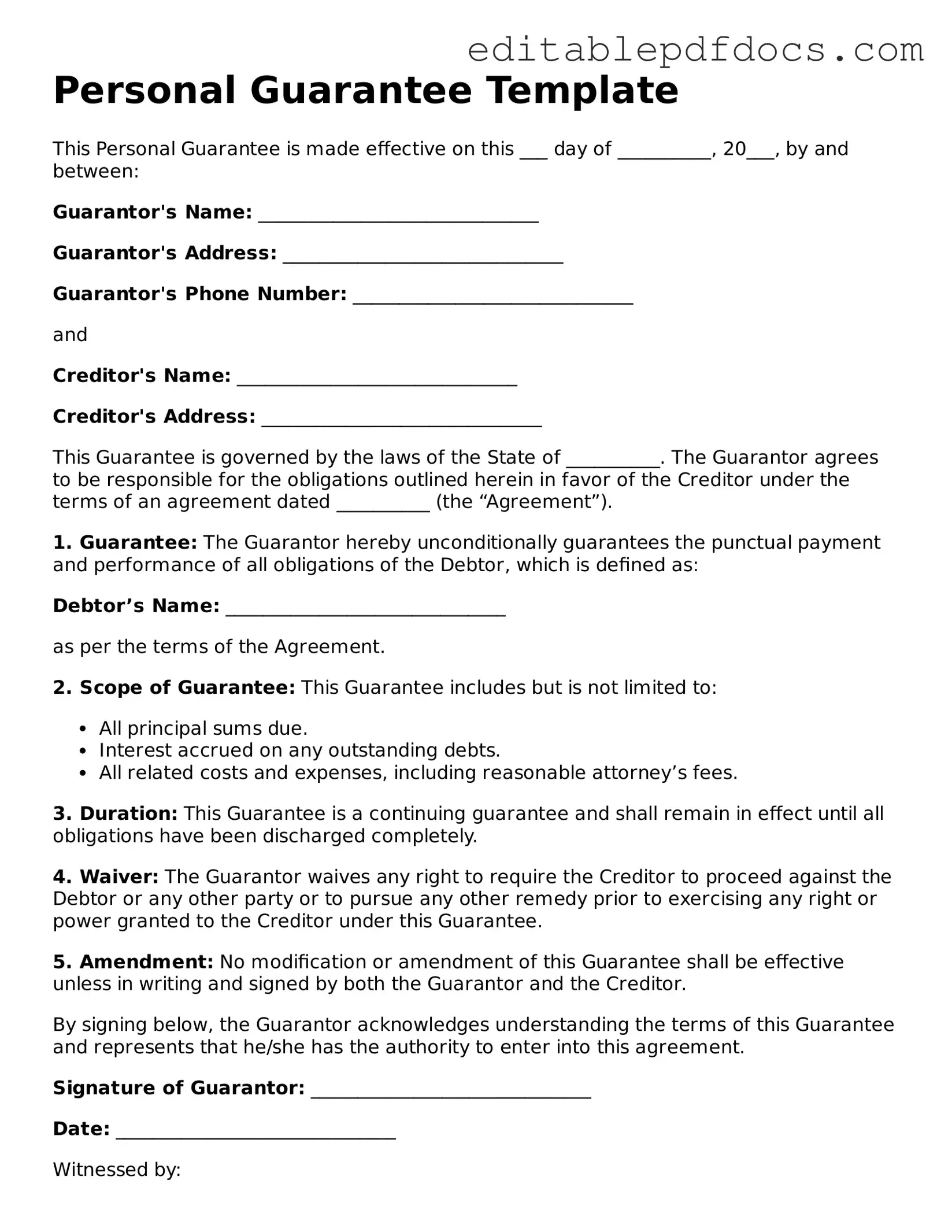Filling out a Personal Guarantee form is an important step for many individuals and businesses. However, mistakes can lead to significant issues down the line. Here are ten common errors to avoid.
First, many people forget to read the entire form before signing. Skimming through the document can result in missing crucial information or terms that could affect their obligations. It’s vital to understand what you are agreeing to.
Another frequent mistake is providing incomplete information. Omitting details such as your full name, address, or social security number can cause delays or even rejection of the guarantee. Ensure that all fields are filled out completely and accurately.
Some individuals fail to use their legal name. Using a nickname or an abbreviated version can create confusion and may invalidate the guarantee. Always use your full legal name as it appears on official documents.
People often neglect to date the form. A missing date can raise questions about the timing of the agreement and complicate enforcement if needed. Always include the date when you sign the document.
In some cases, individuals do not provide the necessary identification. A Personal Guarantee may require a government-issued ID or other documentation to verify identity. Be prepared to include copies of these documents.
Another common error is misunderstanding the scope of the guarantee. Some individuals may not realize that they are personally liable for the debts of the business. Clarify what you are guaranteeing to avoid unexpected liabilities.
Failing to consult with a legal professional can be a critical mistake. Many overlook the importance of seeking advice, which can help in understanding the implications of the guarantee. Consulting a lawyer can provide clarity and protection.
People also sometimes sign on behalf of another party without proper authority. If you are signing as a representative, ensure that you have the authority to do so. Otherwise, the guarantee may not be enforceable.
Another error is not keeping a copy of the signed form. After signing, retain a copy for your records. This can be essential if disputes arise in the future.
Finally, individuals may fail to follow up with the lender or creditor after submitting the form. Confirming receipt and understanding any next steps can help ensure that the guarantee is processed correctly.
